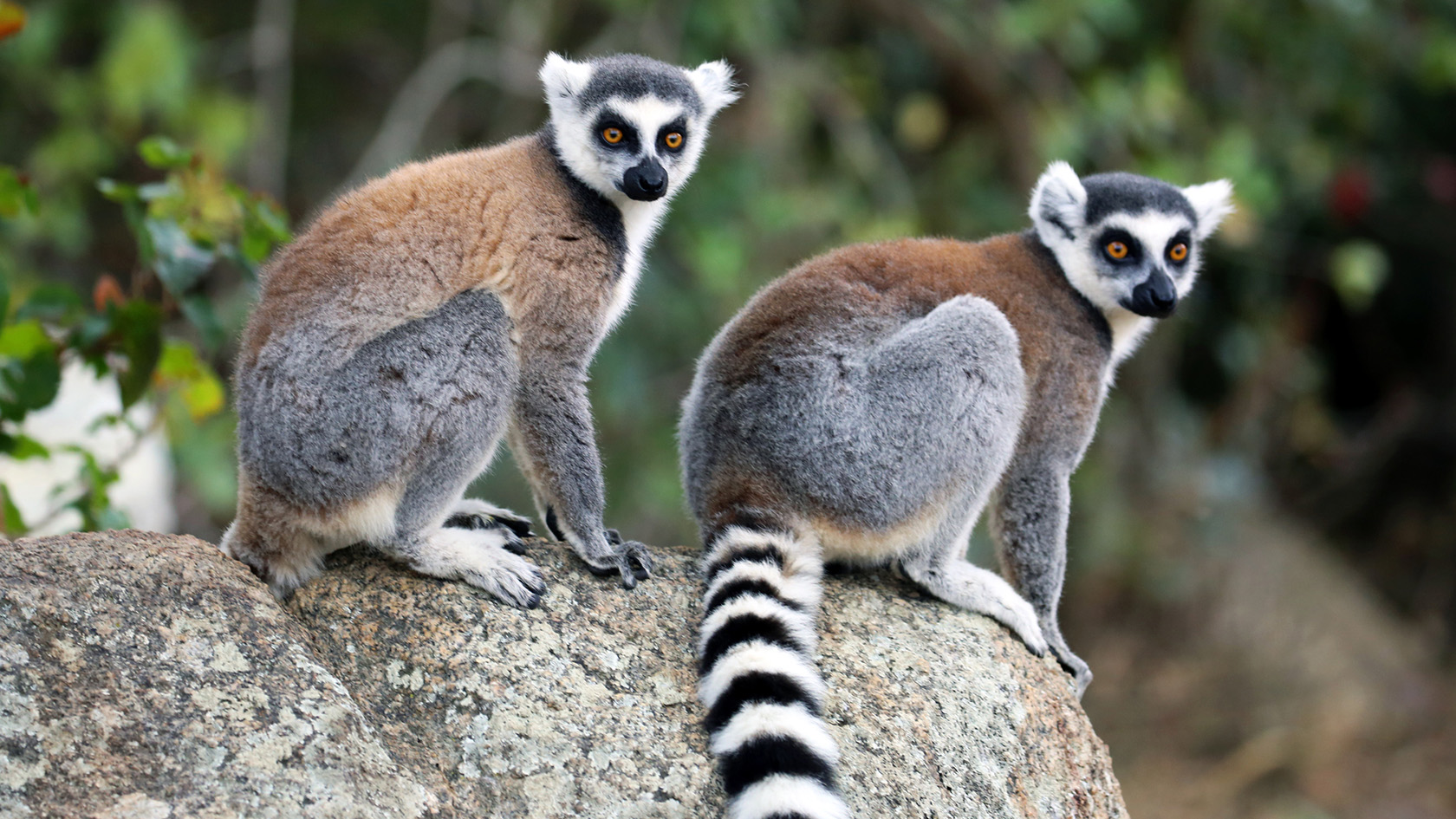Navigation auf uzh.ch
Navigation auf uzh.ch

Primates – and this includes humans – are thought of as highly social animals. Many species of monkeys and apes live in groups. Lemurs and other Strepsirrhines, often colloquially referred to as “wet-nosed” primates, in contrast, have long been believed to be solitary creatures, and it has often been suggested that other forms of social organization evolved later. Previous studies have therefore attempted to explain how and when pair-living evolved in primates.
More recent research, however, indicates that many nocturnal Strepsirrhines, which are more challenging to investigate, are not in fact solitary but live in pairs of males and females. But what does this mean for the social organization forms of the ancestors of all primates? And why do some species of monkey live in groups, while others are pair-living or solitary?
Researchers at the Universities of Zurich and Strasbourg have now examined these questions. For their study, Charlotte Olivier from the Hubert Curien Pluridisciplinary Institute collected detailed information on the composition of social units in primate populations in the wild. Over several years, the researchers built a detailed database, which covered almost 500 populations from over 200 primate species, from primary field studies.
More than half of the primate species recorded in the database exhibited more than one form of social organization. “The most common social organization were groups in which multiple females and multiple males lived together, for example chimpanzees or macaques, followed by groups with only one male and multiple females – such as in gorillas or langurs,” says last author Adrian Jaeggi from the University of Zurich. “But one-quarter of all species lived in pairs.”
Taking into account several socioecological and life history variables such as body size, diet or habitat, the researchers calculated the probability of different forms of social organization, including for our ancestors who lived some 70 million years ago. The calculations were based on complex statistical models developed by Jordan Martin at UZH’s Institute of Evolutionary Medicine.
To reconstruct the ancestral state of primates, the researchers relied on fossils, which showed that ancestral primates were relatively small-bodied and arboreal – factors that strongly correlate with pair-living. “Our model shows that the ancestral social organization of primates was variable and that pair-living was by far the most likely form,” says Martin. Only about 15 percent of our ancestors were solitary, he adds. “Living in larger groups therefore only evolved later in the history of primates.”
In other words, the social structure of early primates was likely more similar to that of humans today than previously assumed. “Many, but by no means all of us, live in pairs while also being a part of extended families and larger groups and societies,” Jaeggi says. However, pair-living among early primates did not equate to sexual monogamy or cooperative infant care, he adds. “It is more likely that a specific female and a specific male would be seen together for most of the time and share the same home range and sleeping site, which was more advantageous to them than solitary living,” explains last author Carsten Schradin from Strasbourg. This enabled them to fend off competitors or keep each other warm, for example.
Literature:
Charlotte-Anaïs Olivier, Jordan Martin, et al. Primate Social Organization Evolved from a Flexible Pair-Living Ancestor, Proceedings of the National Academy of Sciences, 28 December 2023. Doi: 10.1073/pnas.2215401120